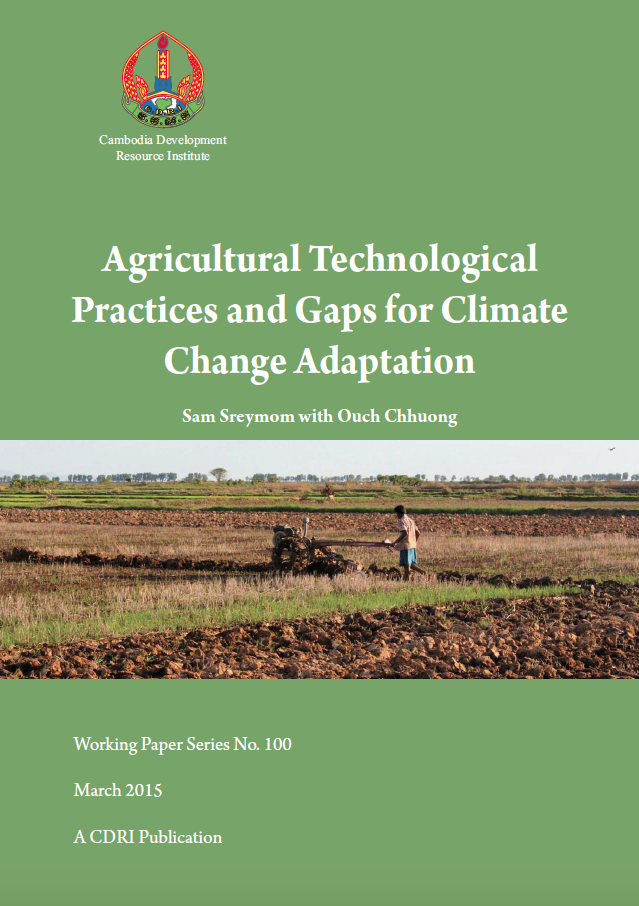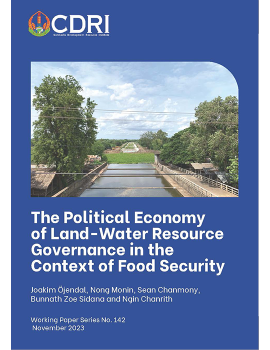
Agricultural Technological Practices and Gaps for Climate Change Adaptation
Khmer PDF (19)
Abstract/Summary
Agriculture plays an important role in sustaining rural
livelihoods. Eighty-three percent of rural people are engaged in agriculture (NIS and MAFF 2014). An
emerging problem facing agriculture is climate change. The anticipated impacts of
climate change and variability on agriculture include changes in rainfall patterns, higher
temperatures, increased frequency and intensity of flood and drought, and increased incidence of
pests and disease (MOE and UNDP 2011). These serious problems emphasise the critical need for
climate-smart agriculture (CSA) (FAO 2013). Among CSA techniques, the system of rice
intensification (SRI) is already being practised in Cambodia. SRI is a set of best practices that can
increase rice yield on infertile soil to as much as 15 tonnes per ha, reduce the amount of irrigation
water required, and use only local inputs (Willem 2002; Norman 2007; Kassam, Stoop and
Uphoff 2011).
This study identifies local knowledge and SRI practices in the
Tonle Sap and Mekong delta agro-ecological zones. It looks at gaps in local practices and suggests
ways of closing those gaps to enable farmers to cope with the effects of climate
change. Primary data was collected from key informant interviews, focus group discussions and
in-depth interviews with various institutions and individuals concerned.
The selection of improved varieties is the most common SRI
practice adopted to date. Marketdriven varieties are the most popular. Other SRI practices have been
partly adopted and adapted to local conditions. Local people choose only the practices
they think beneficial and feasible for them. The study also identifies various factors affecting
this selection: socioeconomic, agronomic, physical, technological and institutional.
Local communities need to mobilise local resources. Collective
action is therefore required to share technical information, foster local innovation in dealing
with weeds and adapting new practices, improve access to markets and inputs, identify local
water storage options and share risks and labour.
NGOs should collaborate more closely with departments involved
with climate change adaptation
and SRI to expand coverage of CSA. They should also focus more on local innovations and consider the
complexity and technical requirements of each practice.
NGOs and government extension agents should provide advice and services to help farmers connect to local and distant markets. Specialist departments and institutions also have to be engaged in research and development. The government should not only increase the number of village agents but also mobilise local people to work as local extension workers.



